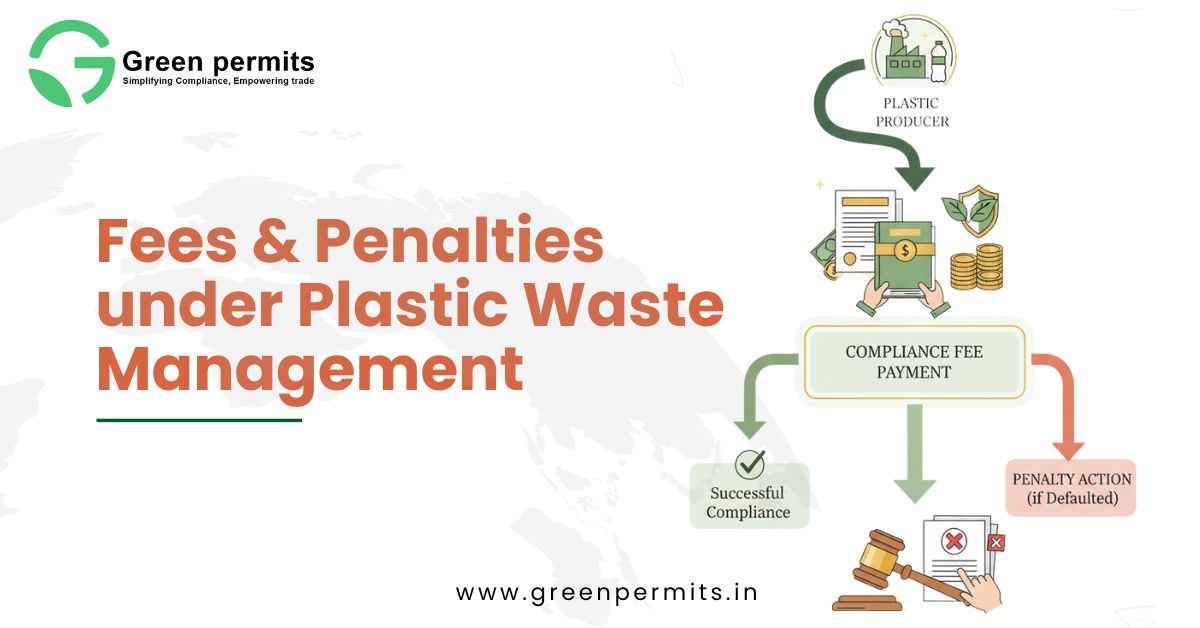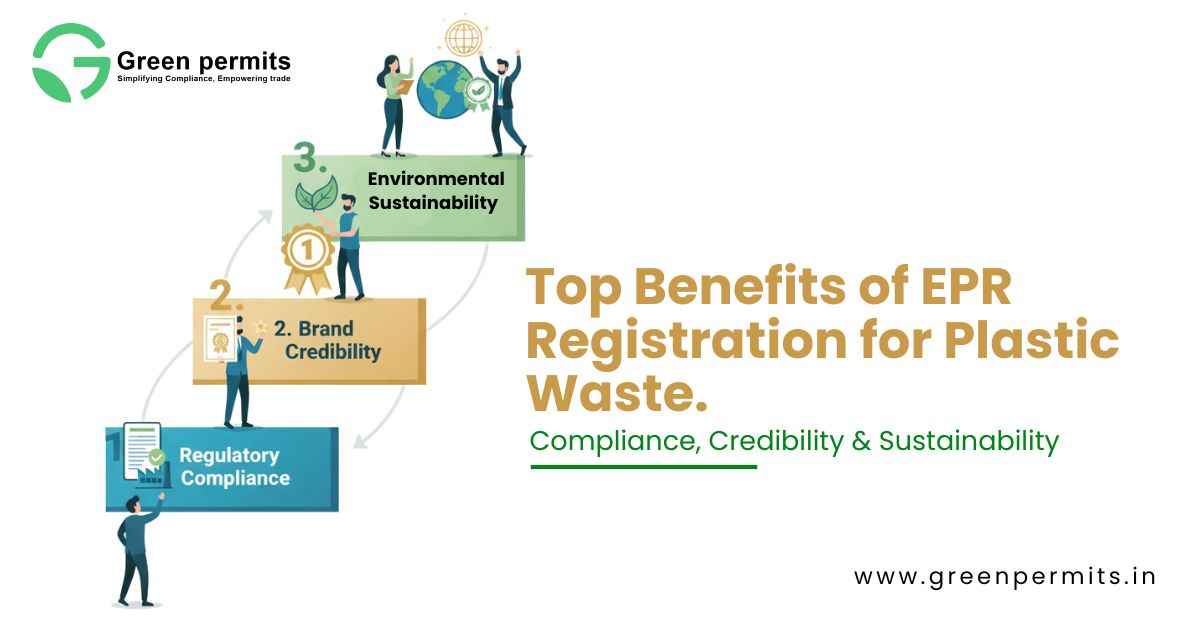When EcoWave Packaging Pvt. Ltd., a growing FMCG supplier from Pune, launched its eco-friendly range in early 2025, their marketing team celebrated a major milestone. But the excitement didn’t last long — within two weeks, they received a notice from CPCB.
The reason? Their packaging design missed the newly mandated QR code under the Plastic Waste Management (Amendment) Rules, 2025.
What felt like a minor oversight turned into a compliance setback. They had to halt production, redesign all their labels, and spend over ₹4 lakh fixing a simple digital code error.
For hundreds of Indian manufacturers and brand owners, this story is becoming common. The new amendment has made digital traceability — through barcodes or QR codes — a non-negotiable compliance requirement.
Understanding the 2025 EPR Barcode & QR Code Rule
The Plastic Waste Management (Amendment) Rules, 2025 mark a turning point in India’s Extended Producer Responsibility (EPR) regime. Under Rule 11(1A), all registered entities must include one of the following identifiers on their plastic packaging:
- A barcode
- A QR code
- A brochure or leaflet
- A unique identification number linking to online packaging data
These identifiers make each packaging unit digitally traceable, ensuring that CPCB can monitor the material’s journey from production to recycling.
Why It Matters for Businesses
Until now, EPR compliance was largely document-driven — focusing on declarations and annual reports. From 2025 onward, packaging itself becomes proof of compliance.
The barcode or QR code is no longer a decorative graphic — it’s a compliance passport that verifies your brand’s accountability in the supply chain.
Ignoring this new requirement could mean more than just paperwork delays — it can lead to registration suspension, financial penalties, and damaged credibility with regulators and clients alike.
Who Must Comply — PIBOs, Brand Owners, and Recyclers
The rule applies to all registered Producers, Importers, Brand Owners (PIBOs), and Plastic Waste Processors/Recyclers operating under the CPCB’s EPR framework.
Even businesses outsourcing their packaging to third-party vendors are responsible for ensuring that their packaging meets barcode or QR code compliance standards.
Category-wise Labelling Requirements
| Category | Mandatory Label Elements | Effective From | Remarks |
|---|---|---|---|
| Carry Bags & MLP | Barcode/QR with manufacturer name, thickness, and EPR registration number | July 1, 2025 | Must be scannable and placed on primary packaging |
| Compostable Plastics | Barcode/QR linked to CPCB compostable certificate number | Jan 1, 2025 | Already applicable for certified materials |
| Rigid & Flexible Packaging | Unique number or QR code mapped to CPCB portal data | July 1, 2025 | Required for both virgin and recycled material |
| Recyclers / PWPs | QR on bales or packaging of processed plastic waste | July 1, 2025 | Enables tracking of recovered waste quantities |
Business Insight:
These identifiers create an end-to-end accountability system. When scanned, they confirm the packaging’s source, recyclability, and EPR registration status — minimizing scope for false declarations or unverified packaging claims.
How to Generate & Upload QR Codes on the CPCB Portal
While the rule looks simple on paper, its execution involves a digital workflow that must be followed carefully.
Step-by-Step Process for Businesses
- Login to your CPCB EPR account at the official portal.
- Navigate to the ‘Packaging Label Declaration’ section.
- Choose your preferred label type: Barcode, QR, or Unique ID.
- Enter your EPR registration number, manufacturer details, and packaging category.
- The system will auto-generate a digital code (SVG or PNG) linked to your registration data.
- Print the code visibly on all product packaging.
- Upload a proof image of the printed code for CPCB verification.
- Once verified, your company will be listed in the CPCB Quarterly Public Record of Compliant Entities.
Common Pitfalls to Avoid
- Using an unlinked QR code that doesn’t redirect to CPCB records.
- Forgetting to embed the EPR registration number in the encoded data.
- Poor contrast or incorrect placement that makes the QR unreadable.
- Failing to submit artwork proof before product distribution.
Tip:
Before mass printing, always test-scan your code to confirm it redirects to valid registration data. A quick scan check can save weeks of compliance trouble later.
Cost & Compliance Impact for Businesses in 2025
The transition to digital identifiers adds minor costs to design and printing — but these are small compared to the financial and reputational losses from non-compliance.
| Business Type | Estimated Setup Cost (₹) | If Ignored | Potential Penalty (₹) |
|---|---|---|---|
| Small PIBO (<100 MT/year) | ₹25,000–₹50,000 | CPCB show-cause notice | ₹1–2 lakh |
| Medium Brand Owner | ₹75,000–₹2,00,000 | EPR certificate delay/non-renewal | ₹3–5 lakh |
| Large FMCG / Importer | ₹3–5 lakh | Legal action under EPA Sec.15 | ₹5–10 lakh |
Business Takeaway:
Compliance investment today prevents long-term legal exposure. Early adopters also gain smoother audits, faster renewals, and stronger retail credibility.
When Barcode Errors Led to Real Business Loss
A Chennai-based homecare brand faced a 45-day clearance delay when their product labels carried a static barcode that didn’t redirect to their CPCB registration link.
CPCB flagged their artwork proof as invalid, forcing a reprint of 80,000 labels and postponing their product launch.
This single error cost them ₹5 lakh in reprinting and logistics — all due to a technical oversight during artwork finalization.
The lesson is clear: treat your barcode or QR as a compliance certificate, not a marketing add-on.
How Barcode & QR Compliance Builds Business Credibility
When done correctly, digital packaging identifiers can add immense strategic value to your brand:
- Establish traceability that strengthens your EPR audit trail.
- Reduce back-and-forth paperwork with CPCB and SPCBs.
- Build consumer trust — buyers can verify sustainability claims by scanning your code.
- Simplify supply chain coordination — recyclers can validate the origin of plastic waste.
- Support India’s vision of digitalized environmental compliance under EPR 2.0.
Business Relevance:
Instead of seeing compliance as a burden, think of it as brand assurance technology — it shows your transparency and accountability in environmental performance.
Key Takeaways for Businesses
- Ensure barcode or QR code integration on all packaging by July 1, 2025.
- Keep proof of label upload ready on the CPCB portal before distribution.
- Train internal design and procurement teams on label placement and print quality.
- Audit your vendors — ensure third-party packers or printers follow the same rule.
- Consult EPR professionals to set up an automated workflow for future packaging updates.
Conclusion
The 2025 Amendment under the Plastic Waste Management Rules is not just a regulation — it’s a step toward transparent, tech-enabled EPR compliance.
Businesses that adapt early will save time, protect their reputation, and stand out as sustainability leaders in an increasingly competitive market.
📞 +91 78350 06182 | 📧 wecare@greenpermits.in
Book a Consultation with Green Permits
Book a Technical Call with Expert
FAQs — Barcode & QR Code Rules under EPR 2025
To ensure every packaging unit is digitally traceable for CPCB and State Board monitoring.
All registered PIBOs, brand owners, importers, recyclers, and processors handling plastic packaging.
You may face penalties under the Environment (Protection) Act, 1986, and risk suspension of your EPR registration.
No. It must be generated or linked through the CPCB EPR portal and validated before printing.
Yes. Every category of plastic packaging, including recycled and compostable, must carry a scannable identifier.
Consult your packaging vendor and test your QR for readability, size, and CPCB redirection before mass production.



